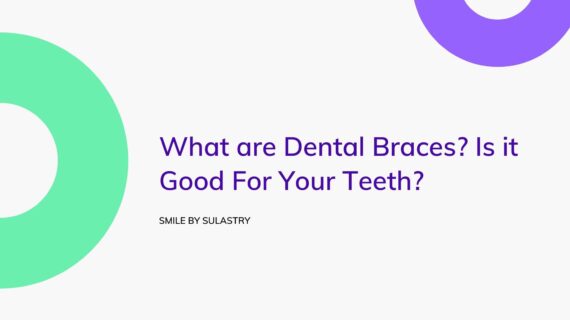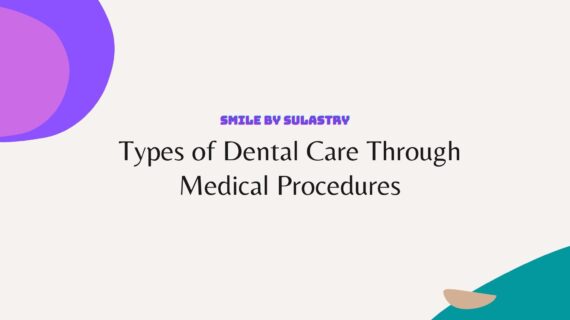What are Dental Braces? Dental Braces are a way to straighten or move your teeth, to improve their appearance and the way they work. Braces can also help you maintain healthy teeth and gums in the long term and make eating more comfortable, by spreading the bite pressure all over your teeth. It should work by applying pressure to the teeth, to slowly move them in the right direction. As the pressure starts to work, the bones in the jaw change to allow the teeth and roots to move.
Dental Braces is commonly used by dentists in orthodontic treatment for a variety of reasons. One of its most common uses is to correct crooked or crooked teeth. Modern materials and technology make the experience of having braces much more comfortable.
Also Read Don’t Just Use Braces, You Must Know the 5 Benefits of Braces Below
Dental Braces
Traditionally, braces have been uncomfortable for first-timers. Braces are metal tools that are painful to wear and often cause sores on the inside of the mouth, leading to cuts and damage. In addition, braces are unsightly and braces are generally worn by teenagers and young adults. When wearing it can often cause a decrease in self-confidence.
But nowadays, braces are less visible in the mouth and less conspicuous. The brackets attached to each tooth are smaller or may be attached to the back of the teeth so they are less visible. In addition, brackets can be made of ceramic, plastic, metal or a combination of these materials and can also be made tooth-colored.
Braces come in two forms, they can be attached and worn at any time. In this case the patient can remove it if they wish.
Orthodontic treatment aims to move the teeth into a stable position. This is complex and requires a specialist’s understanding of where the tooth can be moved, and how.
The new position of your teeth should be stable. However, you should wear braces for as long as your dentist recommends. This will help stop your teeth from returning to their original place. Even though they do this only a little, you may be disappointed with the results.
You will also need to wear the retainer regularly for some time after your treatment is finished. This will stop your teeth from returning to their original position before the treatment.
Short Term Risk
Braces can create small spaces around the teeth that can trap food particles and will stain the teeth. If plaque deposits on the teeth are not removed then:
- The loss of minerals on the outer enamel surface of your teeth, so that it can leave permanent whitish stains on your teeth
- Tooth decay and gum disease
Long term risks
You may also get long-term risks such as:
- The root length of the teeth is shorter. During tooth movement, part of the bone in the path of the moving tooth dissolves, while new bone is put behind it. Permanent loss of root length can occur during this process, which can cause the tooth to become less stable. However, in most cases, this doesn’t cause a problem.
- Loss of correction. If you don’t follow your dentist’s instructions carefully after you have removed your braces, especially when using a device called a retainer, you may lose some of the correction gained when wearing braces.
How do you take care of your braces?
If you want to take care of braces, it is important to keep your teeth checked by your dentist, at regular check-ups. Both during your orthodontic treatment and after.
Clean your teeth carefully every day, don’t forget to clean between your teeth as much as you can. Braces are delicate and you have to clean them carefully so they don’t break. Your dental team will be able to show you how to do this for the type of brace you are wearing.
Reduce how much sugary foods and drinks you have and sticky foods that can stick between braces. That’s because sticky and hard food can damage your braces.
Brush your teeth twice a day, at night and at least once during the day. Use mouthwash if necessary. Your dentist may recommend a stronger fluoride toothpaste, or perhaps a fluoride gel or mouthwash, for you to use.
How Successful is The Use of Braces?
In most cases, these braces work well, but you will need to still follow directions from your dentist for this to work. Follow all the instructions given and you will get maximum results.
When you wear braces, you have to be more careful about what you eat and other things that can potentially damage your braces. To give your braces the best chance to improve your teeth, cut back on sweet and sour foods. This is because braces can trap food debris and cause more plaque to build up than usual. Plaque is a thin, sticky layer of bacteria that builds up on your teeth.
You should continue to visit your dentist regularly during your orthodontic treatment, as well as after your treatment is finished.
References :
- https://www.mayoclinic.org/tests-procedures/braces/about/pac-20384607
- https://www.news-medical.net/health/Whats-are-Dental-Braces.aspx
- https://www.dentalhealth.org/safebrace-whats-are-braces-and-what-do-they-do

